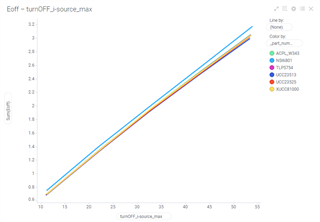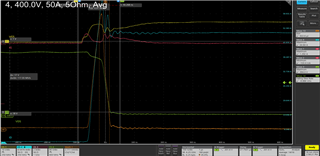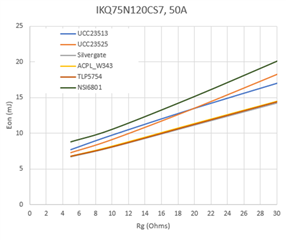Other Parts Discussed in Thread: UCC23525
Tool/software:
Hi
Customer want to use UCC23513 to drive IKQ100N120CH7(Ciss=13nF, Qg=700nC),20Khz switching frequency.
Could UCC23513 drive this IGBT? Should we add external push-pull driving circuit?
Besides, I want to know how to determine if a gate driver have a enough capability to drive a MOSFET? How to calculate? Could you please share the detailed steps?
Thank you,
Yishan Chen








